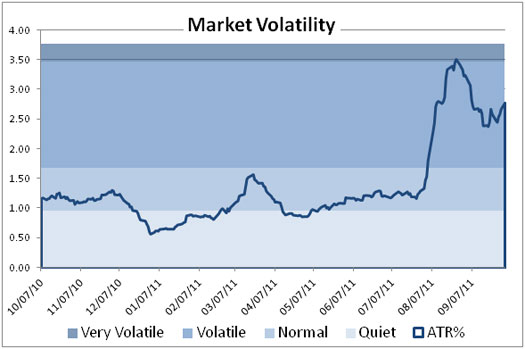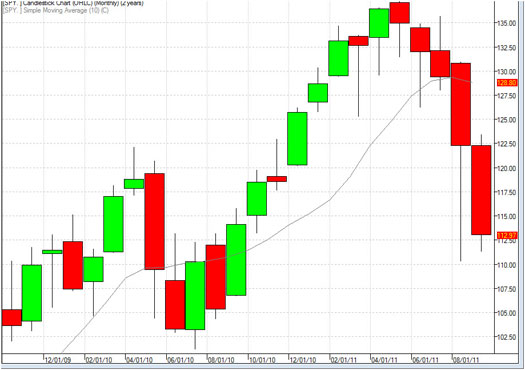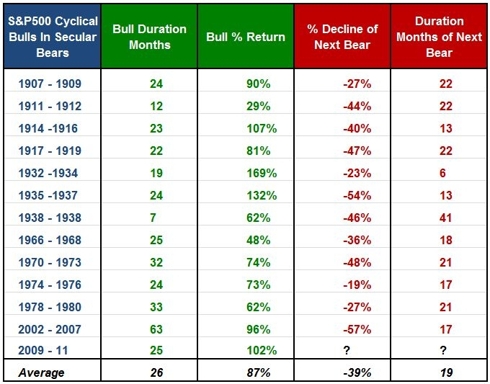Mostly reads like his newsletters, and Tharp claims this is his favorite book, yet he really didn’t write it or write anything new at least, it’s mostly commentary/essays from his students about how they went through a process towards improvement. As Ed Seykota, one of the market wizards, said to Tharp in 2006 when Tharpy was looking for ‘interview’ material to create a new book, “You might also consider adding a chapter to your book about your own personal experience, Writing Your Way to Freedom.”
Clearly, Tharp is just a guy who tells people how easy it is to profit in the financial markets once they overcome their psychological barriers, and he claims he will show them ‘techniques’ on how to do it (for example, Parts Party), yet Tharp has not overcome his own psychological barriers to trading success and has no trading success.
In the Preface of ‘Trading beyond the matrix’ this issue arises…
If Van Tharp knows so much about trading, then why doesnt he just trade? Well, the assumption behind that statement is that the be all and end all of life is the money you get from trading. That is not the case for me. [My commentary: no of course not, your mission is to sell overpriced seminars about how to become a great trader – something you have not achieved. If one can’t make money in the financial markets at least talk about it and get paid for it.]
-
The Preface; Tharp outlines three levels of trader transformation,
-
The Introduction; Transformation of the Trading Game: Understanding the Basics,
-
Chapter One; the first in a series of real traders’ successful journeys to trading mastery,
-
A brief summation of each chapter of book, the table of contents, and free bonus offers.
A few students who improved their trading abilities for one or two seasons is not mastery. I like the idea of transformation, not the crappy ‘Matrix’ theme though, but it is a good reminder about ‘programming’ and how that becomes our ‘reality.’ The reality is that it is easy to place a trade but difficult to compete with people and institutions who have access to multi-million dollar trading systems and a team of research staff. Perhaps the idea of attempting to constantly fish in the financial markets to feed yourself is silly and foolish, the ultimate goal being not to have to continually fish and be at risk but to benefit from a very short period of luck, or timing in investment choice. If people are programmed to fail in the markets, why paddle upstream to battle such currents with force? Power is the ability to receive a benefit, to accrue cash flow from wherever it flows.
Tharpy only recently came to the conclusion that there are three positions of transformation:
transformation of the trading game
psychological transformation around beliefs, stuck feelings and conflicting parts
change in your consciousness
Well, let me take a moment to throw in the ‘War Games’ film theme instead of ‘the matrix’ theme as Tharp likes to use for the purpose of shoveling his new book out into the marketplace with affiliate offers. In the film War Games, the computer ‘realizes’ that it is best not to play a game which cannot be won. I’ve listened to some of the Tharp audio from seminars on trading and psychology and nothing significant was mentioned that would help myself or the attendees perhaps. One interesting attendee from outside the States mentioned his urge to buy 25,000 shares of an equity was stifled, only to watch that stock rise in value and not participate. Our inherent programming is not conducive to participating profitably in the financial markets for any length of time – I disagree with Tharp as he seems to purport that once you address your barriers and make a business plan for trading you are on your way to making a living in the markets, but these barriers never seem to permanently disappear, one will probably at best temporarily overcome one’s own negative influence. Tharp’s own experience of being around the markets for twenty years or more and not making a fortune ought to speak for itself. During the dot com boom times the financial press covered accounts of regular people, whom were not associated with Tharp in any way, and these individuals made, at times, hundreds of thousands of dollars in profit during the late 90s. They took risks beyond what Tharp would say is ‘safe’ and they bet on fast moving equities that moved higher and eventually exited their positions favorably. Their goal was not to do this each day or for the rest of their life… simply to benefit from the goings-on in the marketplace around them. Those stories are interesting to some degree because they do not deal with the psychological aspects that Tharpy claims are so important in trading.
Tharp does say something about his belief, which is nice:
I believe the financial markets are part of a huge game, and
at the top levelwhere the rules get set, made and changed
there is Big Money. Big Money makes its own rules and profits no
matter what you or any individual trader does; they are much bigger than that.
Big Money controls the U.S. government. You might
have noticed, for example, where U.S. Treasury leaders so often
come from and where they go afterwards. The last six secretaries of
the treasury have included two people with strong ties to Goldman
Sachs, a former president of the New York Federal Reserve, and a
chief economist at the World Bank. The other two were both former
company CEOs. Much controversy has been associated with
these men, but it is generally ignored by the public.
In addition, the Federal Reserve, which prints dollars, is not
government owned or controlled. Instead, it is privately owned by
some of the richest people in the world.
Here’s the thing though, it shows he got educated along the way, and fairly recently. His other books did not mention this, and neither did his monthly newsletter until the last two years or so… (not sure if this belief was mentioned in the ‘Super Trader’ book) This line of thinking, or belief, that Tharp espouses has already been expressed in numerous blogs.
Thus, one of your jobs as a potential Super Trader is to clear out the crowd and
bring your mind toward oneness and serenity.
Much of our education for traders involves this sort of work.
Imagine looking at all of your trading beliefs and eliminating those
that don t help you win. On top of that, imagine eliminating all the
beliefs that limit you. Now imagine eliminating all the beliefs about
the universe that seem to indicate that you cant win because the
universe (or God) is against you. Lastly, imagine getting all of your
parts unified so there is no conflict inside. This is how powerful
personal transformation can be.
[my commentary: So Tharpy is going to show me in his book how to eliminate all the beliefs that limit me, yet I don’t imagine the guy has done any such thing for himself. Certainly not imagining Tharpy having any kind of breakthrough since he doesn’t trade.]
A lot of Tharpy’s nonsense about trading is about risking 1% or less on each trade because no individual trade is important… instead of finding a meaningful edge and placing one large bet where it matters most. I like having a ‘why’ – some reason about potential earnings changes that has the capacity to drive the share price.
In the Preface the work of Dr. Hawkins is mentioned, and I must admit, Power vs. Force is a much better work than any of Van’s books or materials… The idea that you could raise your consciousness to make better decisions – or rather, that you could use your body as a mechanism to inform you of true/false so you can ask questions to make decisions is quite tempting. But Hawkins in that particular work does not have data on making financial decisions. I don’t think the Van Tharp Institute is going to help me get rid of 1,500 to 5,000 nonuseful beliefs in a year. RJ, at the institute, has been there for a few years and has not traded his way to financial freedom. RJ, to me, represents the dream of striving of toward an idealized blissful profitable trading life, yet he’s trapped in the lure of the financial markets. If the goal is provide for yourself and your family with abundant cash flow, what does it matter where the cash flow arises from? Why does it need to be from trading in the financial markets? Seems shortsighted at best… to have access to capital but no imagination other than participating in the financial markets.
Here’s the best part of the Matrix book or best part of the Preface at least:
Consequently, there is nothing we do, at least in the Super Trader
program, that you couldnt do on your own.
[my commentary: Yep, there is nothing Tharpy does or offers that you couldn’t do on your own. Since he has no substantial trading profits I don’t even imagine he’s had any significant personal transformation with regard to investing in the financial markets. If you take a look at his original Peak Performance home-study workshop material it is poorly written, as it does not show an understanding of the dynamics of the money system, Federal Reserve, pass-through inflation, or how institutional traders interact in the marketplace, nor does it contain actual financial market success examples or useful insights. Train your mind, deal with your emotions, etc. but realistically what does it matter how you ‘feel’? – all profit is determined by your exit. If you could safely buy 10,000, or 50,000 shares at a time and that particular equity position does not move against you significantly or for very long before moving in your favor and allowing a favorable exit point five or more points beyond your entry point you seem to be more productive than fussing with constant low-dollar value transactions.]
Just to give you a sense of what Van has the Super Traders do so you might see what he believes is the proper order for trading preparation:
1. Complete the Peak Performance home study course,
2. Write a lengthy (>100 pages) business plan
3. Develop three non-correlated trading systems
4. Trade those three systems at a 95%+ efficiency level for >100 trades
Doesn’t sound like winning to me… and Tharpy has done all this himself and still can’t trade his way into a fortune but he’s going to teach others? Laughable.
Tharp believes unless a trader understands his psychology at a deep level, then trading may turn out to be an experience of self-sabotage and frustration. Van actually has most of the Super Trader candidates stop trading for the first three stages of the program so they can focus on their personal and business development.
And yet Tharpy can’t trade for a living? Silly. But, oh sure, he’s going to teach you to remove your barriers and trade your way into a fortune. Oh sure… junk seminars.
Tharp does not try to sell you on a trading system, but rather a way of thinking about markets. This can be summarized by:
- Be long when the markets are going up.
- Be short when the markets are going down.
- If you are not sure then stand aside.
And some people think they need a bunch of seminars for this?
Come to my seminar!
___________________________________________








